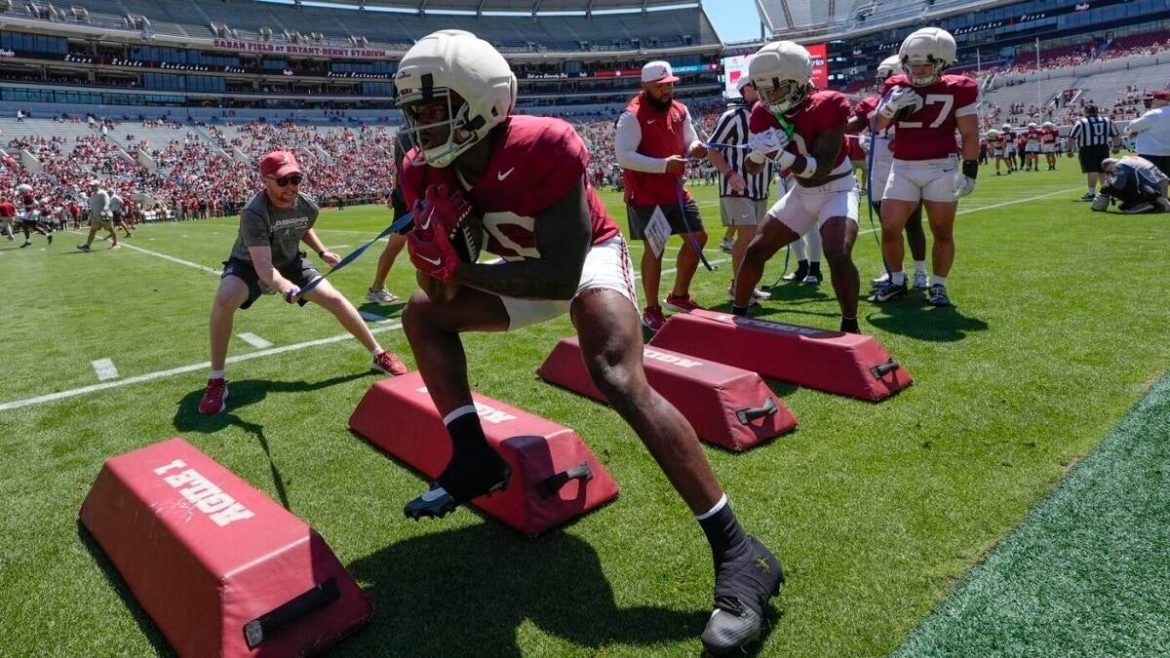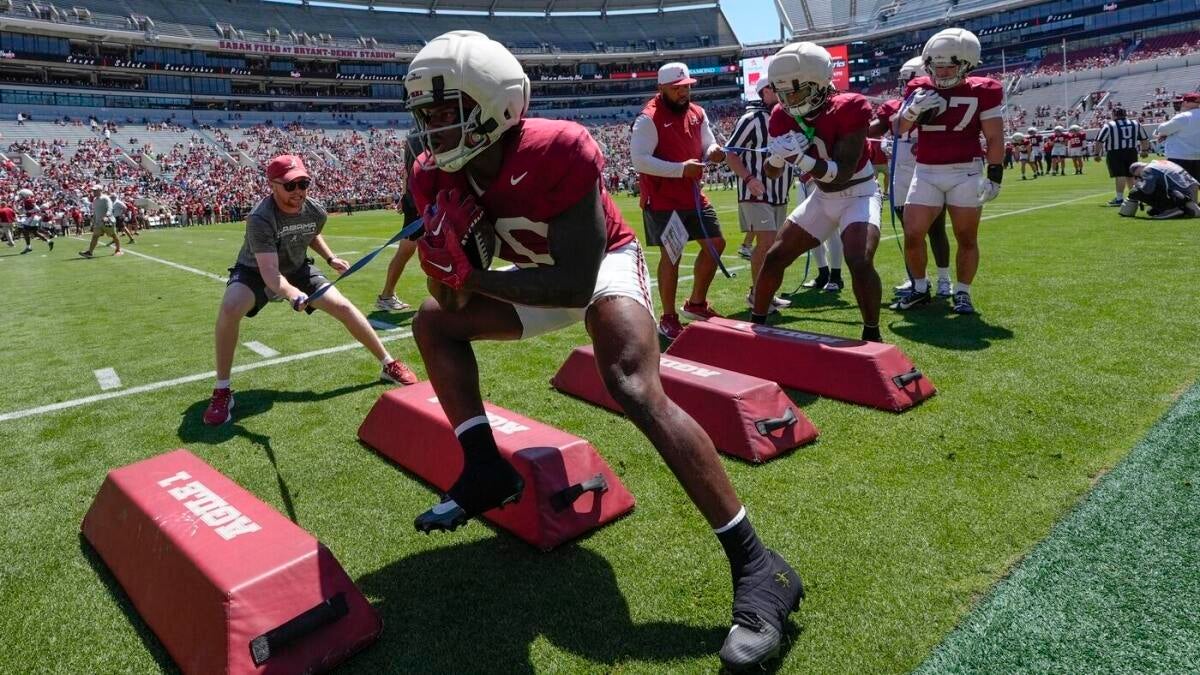The A-Day Dilemma: Is Tuscaloosa Ready to Break Up with Alabama Football’s Spring Game?
For generations, the crisp air of spring in Tuscaloosa has carried with it the echoes of roaring crowds, the thud of pads colliding, and the palpable excitement of Alabama football’s A-Day game. This annual tradition, a scrimmage offering fans a sneak peek at the Crimson Tide’s potential, has been a cornerstone of the community, a uniting force that transcends mere sport. However, a growing chorus of voices, led by Tuscaloosa Mayor Walt Maddox, is suggesting that perhaps it’s time to re-evaluate this long-standing relationship. The question now looms large: Should Alabama’s A-Day continue, or is it time for Tuscaloosa to move on?
The Case Against A-Day: More Than Just a Game
Mayor Maddox’s concerns aren’t rooted in a dislike for football. Instead, they stem from the practical realities of hosting a major event that draws tens of thousands of people to Tuscaloosa. His primary argument centers around the strain A-Day places on city resources, particularly staffing.
Stretched Thin: A-Day requires a significant allocation of police, fire, medical, and other essential personnel. These are resources that could otherwise be deployed to address the city’s everyday needs. As Maddox articulated, diverting these resources for a single event, even one as beloved as A-Day, raises questions about priorities and efficiency. It’s a matter of balancing the tradition with the practical demands of running a city. The event demands a massive coordination effort, often pulling personnel from other critical duties, which can leave the city vulnerable in other areas.
Security Concerns: In an era of heightened security concerns, managing large crowds presents a complex challenge. Ensuring the safety and well-being of attendees requires meticulous planning, extensive security measures, and a substantial investment of resources. The larger the crowd, the greater the potential risks and the more demanding the security apparatus becomes. With the rise of mass gatherings and the need for heightened security protocols, the logistical challenges of hosting A-Day have become more pronounced. The city must ensure that all attendees, from die-hard fans to casual spectators, are safe, which requires a significant investment in security personnel and infrastructure.
Evolving Landscape of College Football: The college football landscape is rapidly evolving, driven by factors such as the transfer portal and NIL (Name, Image, Likeness) deals. These changes have led some programs to scale back or even eliminate their spring games, questioning their value in the new environment. Some teams have opted for closed scrimmages or practices, prioritizing player development and strategic preparation over public spectacles. The argument here is that the traditional spring game format may no longer be the most effective way to prepare for the upcoming season. With the increased mobility of players and the financial incentives provided by NIL deals, the dynamics of college football have shifted, making the traditional spring game less relevant.
Declining Attendance: While A-Day has historically been a major draw, recent years have seen a noticeable decline in attendance. Several factors may contribute to this trend, including changing fan habits, the availability of game footage online, and the evolving nature of the event itself. For example, in 2025, attendance figures dipped, raising questions about the continued appeal of the traditional A-Day format. If fewer people are attending, the argument goes, is the event still worth the significant investment of city resources? The decline in attendance suggests that the event may no longer be as compelling to fans as it once was, which could indicate a shift in preferences or a need for the event to adapt to new fan expectations.
The Enduring Appeal of A-Day: A Tradition Worth Fighting For
Despite the valid concerns raised by Mayor Maddox, A-Day remains a deeply cherished tradition for many in Tuscaloosa and across the Alabama fanbase. The game offers a unique opportunity for fans to connect with the team, witness the development of young players, and bask in the atmosphere of Crimson Tide football.
Community Connection: A-Day is more than just a football game; it’s a community event. It brings people together from all walks of life, fostering a sense of shared identity and pride. Families plan their weekends around A-Day, alumni return to campus, and local businesses benefit from the influx of visitors. The event serves as a powerful reminder of the unifying power of sports. The sense of community that A-Day fosters is invaluable, creating a shared experience that transcends the game itself. It’s a time when the city comes together to celebrate its collective love for football and the Crimson Tide.
Recruiting Advantage: A-Day can also be a valuable recruiting tool for the Alabama football program. The event provides an opportunity to showcase the program’s facilities, coaching staff, and passionate fanbase to potential recruits. The atmosphere of A-Day can be a powerful selling point, demonstrating the level of support and enthusiasm that surrounds Alabama football. For recruits, seeing the energy and excitement of A-Day firsthand can be a deciding factor in their choice to commit to the program. The event offers a glimpse into the culture and environment that the program fosters, which can be a significant draw for prospective players.
Economic Impact: While A-Day places a strain on city resources, it also generates significant revenue for local businesses. Hotels, restaurants, and retail stores all benefit from the influx of visitors. The economic impact of A-Day can help offset the costs associated with hosting the event, making it a net positive for the city’s economy. The economic benefits of A-Day extend beyond the day of the event, as visitors often spend money on accommodations, dining, and shopping, providing a boost to the local economy. The event can also create jobs and support local businesses, making it an important economic driver for the city.
Tradition and Legacy: Perhaps the most compelling argument for preserving A-Day is simply its tradition. The game has been a part of the Alabama football experience for generations, creating lasting memories and fostering a sense of continuity. For many fans, A-Day is a ritual, a time to reconnect with the past and celebrate the present. Abandoning this tradition would be a difficult decision, laden with emotional weight. The tradition of A-Day is deeply ingrained in the culture of Tuscaloosa and the Alabama football program. It’s a time-honored event that has brought joy and excitement to generations of fans, and losing it would be a significant loss for the community.
Finding a Middle Ground: Can A-Day Evolve?
The debate over A-Day highlights the tension between tradition and practicality. While the concerns raised by Mayor Maddox are legitimate, the enduring appeal of the event cannot be ignored. Perhaps the solution lies not in abandoning A-Day altogether, but in finding ways to evolve the event to better meet the needs of the city and the football program.
Scaled-Back Format: One option is to continue scaling back the A-Day format, as was done in 2025. This could involve reducing the length of the game, limiting the number of attendees, or focusing on specific aspects of player development. A more streamlined event would require fewer resources and pose less of a burden on city services. By scaling back the event, the city can still provide fans with a glimpse into the team’s progress while minimizing the strain on resources. This approach could also make the event more manageable and less disruptive to the city’s daily operations.
Alternative Date: Another possibility is to move A-Day to a different date, perhaps one that does not coincide with other major events in Tuscaloosa. This would allow the city to better allocate its resources and minimize disruptions. Choosing a date that doesn’t conflict with other major events or holidays could help ensure that the city has the necessary resources to support A-Day without compromising other critical functions. It could also make the event more accessible to fans who may have other commitments during the traditional A-Day weekend.
Community Involvement: Increased community involvement could also help alleviate some of the strain on city resources. Volunteers could assist with security, traffic control, and other tasks, reducing the need for paid personnel. By engaging the community in the planning and execution of A-Day, the city can tap into a wealth of local knowledge and enthusiasm. Volunteers can help with tasks such as parking, crowd control, and event setup, freeing up city resources for other critical needs. This approach can also foster a sense of ownership and pride among community members, making the event more inclusive and collaborative.
Focus on Fan Experience: Instead of simply focusing on the scrimmage itself, A-Day could be transformed into a more comprehensive fan experience. This could include concerts, tailgating activities, and interactive exhibits. A more diverse event would appeal to a wider audience and generate additional revenue. By expanding the fan experience, A-Day can become more than just a football game; it can be a full-day event that offers something for everyone. This approach can also help attract new fans and create a more vibrant and engaging atmosphere.
The Future of A-Day: A Decision with Lasting Consequences
The decision of whether or not to continue A-Day is a complex one, with significant implications for Tuscaloosa and the Alabama football program. Mayor Maddox’s concerns about the strain on city resources are valid, but the enduring appeal of the event cannot be ignored.
Ultimately, the future of A-Day will depend on the willingness of city officials, university administrators, and the community to work together to find a solution that balances tradition with practicality. Whether this involves a scaled-back format, an alternative date, or a more comprehensive fan experience, the goal should be to preserve the spirit of A-Day while minimizing its impact on the city.
A Crossroads in Crimson:
As Tuscaloosa stands at this crossroads, the decision regarding A-Day will not only shape the future of a beloved tradition but also reflect the community’s evolving relationship with its iconic football program. It’s a decision that requires careful consideration, open dialogue, and a commitment to finding a path forward that honors the past while embracing the future. The roar of the crowd, the clash of helmets, and the spirit of A-Day hang in the balance, waiting to see what the next chapter holds. The community must weigh the benefits and drawbacks of continuing the event and explore innovative solutions that can preserve its essence while addressing the practical challenges it presents. The decision will ultimately reflect the values and priorities of the community, shaping the future of A-Day and its place in the hearts of Alabama football fans.





